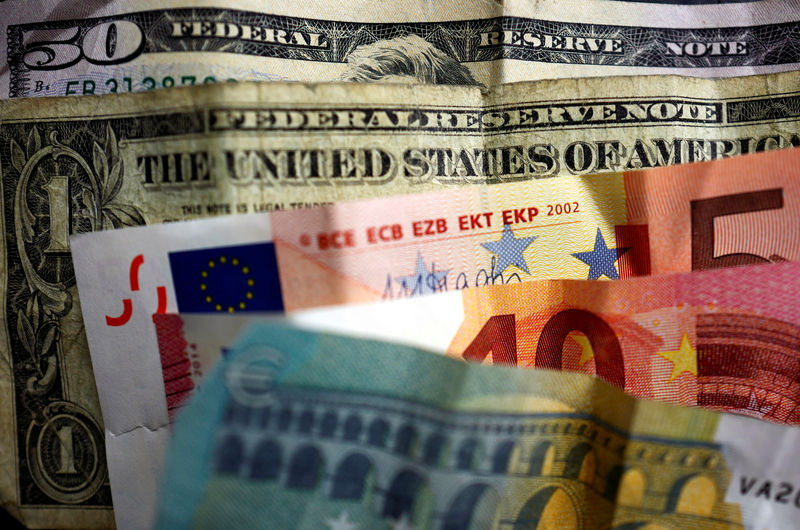The Bank of Japan (BoJ) announced on Friday that it maintained the short-term rate target in the range of 0.15%-0.25%, following the conclusion of its two-day monetary policy review meeting.
The decision aligned with the market expectations.
In July, the BoJ surprised markets by raising the policy rate by 15 basis points (bps) from the range of 0%-0.1% to 0.15%-0.25%. The bank also outlined a plan to taper its monthly outright purchases of Japanese government bonds (JGB) to about JPY3 trillion per month in the first quarter of 2026.
Summary of the BoJ policy statement
BoJ makes decision on interest rate by unanimous vote.
Japan’s economy recovering moderately, albeit with some weaknesses.
Inflation expectations heightening moderately.
Inflation likely to be at level generally consistent with BoJ’s price target in second half of our 3-year projection period through fiscal 2026.
Consumption rising moderately as a trend.
Japan’s economy likely to achieve growth above potential.
Must be vigilant to impact of financial, FX market moves on japan’s economy, prices.
Market reaction to the BoJ policy announcements
USD/JPY caught a fresh bid wave and extended the recovery toward 143.00 before retreating quickly to 142.65, where it now wavers. The pair is down 0.06% on the day, at the press time.
Japanese Yen PRICE Today
The table below shows the percentage change of Japanese Yen (JPY) against listed major currencies today. Japanese Yen was the weakest against the Swiss Franc.
| USD | EUR | GBP | JPY | CAD | AUD | NZD | CHF | |
|---|---|---|---|---|---|---|---|---|
| USD | -0.01% | -0.00% | -0.03% | 0.03% | 0.03% | -0.01% | -0.15% | |
| EUR | 0.00% | -0.01% | -0.03% | 0.03% | 0.02% | 0.00% | -0.14% | |
| GBP | 0.00% | 0.00% | -0.02% | 0.05% | 0.04% | 0.01% | -0.11% | |
| JPY | 0.03% | 0.03% | 0.02% | 0.14% | 0.12% | 0.07% | -0.03% | |
| CAD | -0.03% | -0.03% | -0.05% | -0.14% | -0.01% | -0.03% | -0.16% | |
| AUD | -0.03% | -0.02% | -0.04% | -0.12% | 0.01% | -0.01% | -0.14% | |
| NZD | 0.01% | -0.00% | -0.01% | -0.07% | 0.03% | 0.01% | -0.12% | |
| CHF | 0.15% | 0.14% | 0.11% | 0.03% | 0.16% | 0.14% | 0.12% |
The heat map shows percentage changes of major currencies against each other. The base currency is picked from the left column, while the quote currency is picked from the top row. For example, if you pick the Japanese Yen from the left column and move along the horizontal line to the US Dollar, the percentage change displayed in the box will represent JPY (base)/USD (quote).
This section below was published on September 19 at 23:00 GMT as a preview of the Bank of Japan Interest Rate Decision.
- The Bank of Japan is anticipated to maintain its policy rate unchanged.
- Investors’ focus should remain on the bank’s rate path for the next few months.
- BoJ Governor Kazuo Ueda is seen sticking to the recent hawkish narrative.
The Bank of Japan (BoJ) is expected to keep its short-term interest rate target between 0.15% and 0.25% on Friday, following the conclusion of its two-day monetary policy review.
The decision is set to be announced during the early Asian session. Notably, in March, the BoJ raised interest rates for the first time in 17 years, ending the negative interest rate policy that had been in place since 2016. On July 31, the central bank further surprised markets by hiking its policy rate by 15 basis points to 0.25%.
What can we expect from the BoJ interest rate decision?
As the meeting approaches, most expect a steady policy stance, but market participants will be closely watching for any shifts in the policy statement that might offer clues about when the bank plans to raise rates next.
Currently, money markets are anticipating an increase of about 25 basis points by the end of the year, which would bring the bank’s policy rate to a maximum of 0.50% at the December 19 meeting.
On the consumer front, real wage growth saw a positive turn in June (1.1% YoY) and July (0.4% YoY), which could encourage more spending and potentially push inflation higher. For now, inflation remains above the 2% target.
These factors make it tricky for the central bank to decide when to raise interest rates. If rising prices driven by cost pressures start to weigh on consumer spending, it could hinder the demand-driven inflation the Bank of Japan aims for before it can consider scaling back its stimulus measures.
Sanae Takaichi, a potential successor to Japanese Prime Minister Fumio Kishida, has suggested that the BoJ should avoid raising interest rates further, as it could dampen consumer sentiment and hinder capital expenditure.
From the BoJ, policymaker Naoki Tamura believed that the central bank must increase interest rates to at least 1% by the second half of the next fiscal year, highlighting the bank’s commitment to steady monetary tightening. In addition, board member Junko Nakagawa argued that the BoJ would continue raising interest rates if inflation aligns with its forecast, but emphasized the need to consider market movements’ effects on the broader economic and price outlook before deciding to increase rates. Furthermore, his colleague Hajime Takata cautioned that interest rate hikes should be cautious to avoid significant harm to businesses.
In the meantime, it is worth recalling that BoJ Governor Kazuo Ueda spoke before the Japanese Parliament in late August. In his testimony, he reaffirmed his commitment to raising interest rates if inflation continues to move toward the 2% target, indicating that recent market volatility would not disrupt the BoJ’s long-term plan for rate hikes. However, Ueda cautioned that markets remain unstable, which could influence the central bank’s inflation forecasts.
Ueda’s comments suggested that the central bank might take longer than initially anticipated to decide on its next rate hike, but remained on track to gradually raise borrowing costs from the current ultra-low levels.
According to a Reuters poll published last week, economists unanimously agreed that the BoJ will not raise interest rates at its September policy meeting, though a majority still anticipated an increase at some point by year-end.
As we get closer to the interest rate decision, analysts at Standard Chartered Global Research noted: “We now expect the Bank of Japan (BoJ) to hike the base rate by 25 bps in December (from 15 bps in Q2 and 10 bps in Q3-2025 prior) to 0.50% by end-2024 (0.25% prior) on stronger-than-expected inflation that has stayed above its 2% target for the past 21 months. Wages grew in real terms in June for the first time since March 2022, adding to concerns over demand-side inflation. The BoJ may hike earlier to avoid losing an opportunity to normalise policy before dovish pressures kick in from possible Fed rate cuts of 75 bps by end-2024, risk of a global recession, and China’s slowdown.”
How could the Bank of Japan interest rate decision affect USD/JPY?
The BoJ is largely expected to refrain from acting on the policy rate. However, Governor Ueda is seen sticking to his hawkish narrative, leaving the door open to the continuation of the “normalization” of the monetary policy in the next few months.
A glimpse at the broader picture shows that Fed-BoJ policy divergence remains at center stage. Following the recent 50 basis points rate cut by the Federal Reserve (Fed) in September and prospects of an additional 50 basis points of easing in the latter part of the year, a further downside in USD/JPY does appear as the most favourable scenario for the time being.
Looking at the techs surrounding USD/JPY, Senior Analyst at FXStreet Pablo Piovano suggests that “the resumption of the bid bias in the Japanese yen carries the potential to drag the pair to its 2024 bottom of 139.57 (September 16). A deeper retracement could see the spot revisit the July 2023 low of 137.23 (July 14) ahead of the March 2023 low of 129.63 (March 24)”.
On the upside, “there are initial barriers at the September peak of 147.20 (September 3), and the weekly high of 149.39 (August 15)”, Pablo adds.













